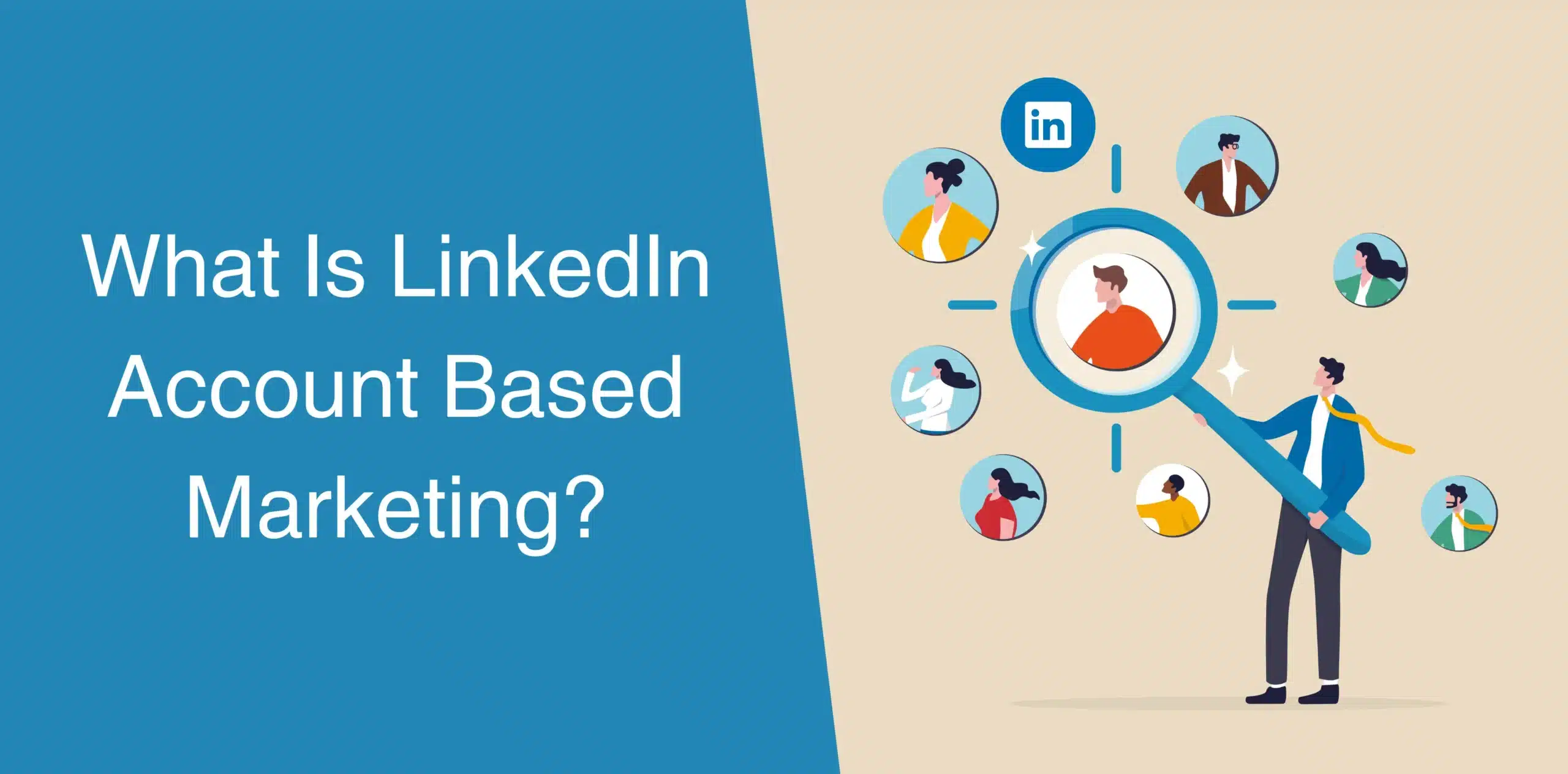Ever been stuck in the blame game between Sales and Marketing? Sales points at Marketing for bad leads, and Marketing shoots back, claiming Sales can’t close the fantastic leads they send.
It’s the eternal Marketing-Sales alignment issue that keeps companies from hitting their sales goals.
But here’s the solution: LinkedIn Account Based Marketing (ABM). For ABM to succeed, joint working relationship with sales is essential and marketing needs to be measuring and optimizing based on accounts.
We’ll walk you through everything you want to learn about LinkedIn Account Based Marketing. We’ll show you how LinkedIn ABM can create a system where Sales never complain about lead quality again.
What Is Account-Based Marketing on LinkedIn?

ABM on LinkedIn isn’t your run-of-the-mill marketing plan – it’s a dynamic strategy that flips the script on how Marketing and Sales teams tag-team.
Forget the old funnel where quantity ruled; ABM shines the spotlight on specific accounts, turning them into loyal customers.
Rather than casting a wide net and hoping for leads, ABM targets specific companies or individuals, aligning your marketing efforts with the exact needs and preferences of your ideal clients.
So, in the traditional setup, Marketing gets the order: “Go get some leads!”
They kick off an inbound extravaganza – content, ads, events – all in pursuit of Marketing Qualified Leads (MQLs).
Then, Sales steps in for the qualification call, but the hitch? There’s a disconnect between what Marketing thinks is a lead (MQL) and what Sales believes is a worthy lead (SQL).
It’s like they’re speaking different languages, and Sales often ends up drowning in a sea of unqualified leads.
Now, enter LinkedIn Account-Based Marketing.
With this marketing model, you change the tune: “Go get these leads!” But it’s not just about numbers; it’s about making every Sales call count.
In simple terms, ABM changes the game for LinkedIn lead generation. It turns your marketing from a scattergun mess to a laser-focused mission.
No more waiting around for leads to accidentally find your content. Now, you go out and connect with decision-makers, turning those connections into conversions. It’s not waiting; it’s winning.
ABM is like a matchmaker for Marketing and Sales:
- Mapping the Dream Accounts: Marketing and Sales put their heads together to pick out the accounts they dream of turning into clients. Teamwork at its finest.
- Teamwork for Critical Meetings: Sales and Marketing join forces, becoming the ultimate power couple to secure those all-important meetings with the big players. No solo acts here – it’s a duo dance.
- Meetings Reserved for VIPs (Very Important Prospects): Sales isn’t wasting time on calls with duds. Instead, every meeting is a rendezvous with a prospect who’s not just interested but seriously qualified.
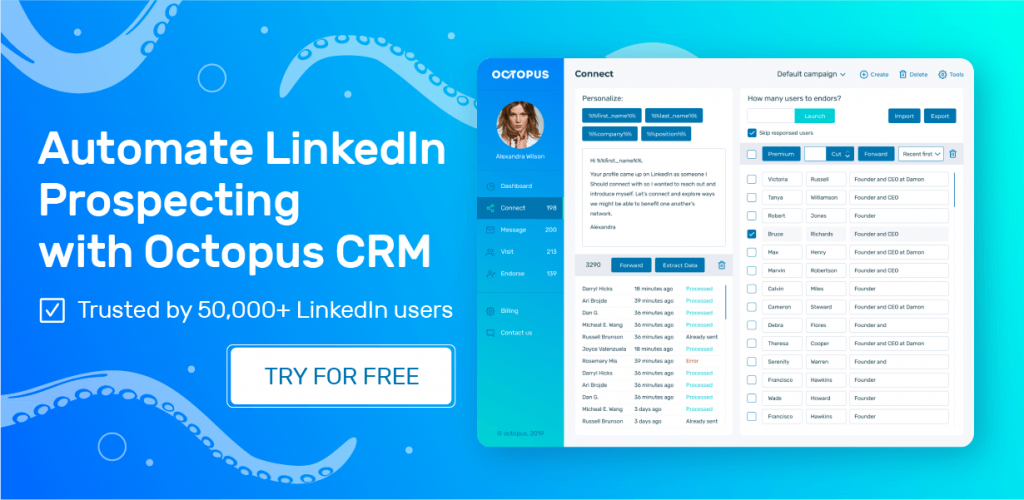
How Does LinkedIn Account Based Marketing Work?
Now that you understand the basics, let’s delve deeper into executing Account Based Marketing (ABM) with LinkedIn. Remember, we’re not just testing a new technique; we’re building a strategy that requires commitment from your entire team.
And, of course, having a LinkedIn Sales Navigator subscription is key to unlocking the full potential of LinkedIn ABM. In other words, think of LinkedIn Sales Navigator as a linchpin here. It is your compass, guiding you through the vast sea of LinkedIn profiles to find the pearls that matter most to your business.
1. Get Everyone Onboard
First things first, keep in mind that implementing LinkedIn ABM is a team effort. Plus, this isn’t a fleeting experiment; it’s a transformative strategy.
As such, you must convince your Sales & Marketing Team and executives to get on board. Without the full engagement of these three crucial components, the implementation of ABM on LinkedIn in your company can be challenging.
If you’re the one reading this, you’re likely the person who will need to rally your colleagues, and yes, be prepared to allocate resources.
Gather your crew and share stories of legendary companies that tapped into ABM. Let your executives know they’re the commanders steering toward unparalleled growth. Assemble your crew, ignite their enthusiasm, ensure they’re on the same page, and let the LinkedIn ABM adventure begin!
2. Obtain a LinkedIn Sales Navigator License
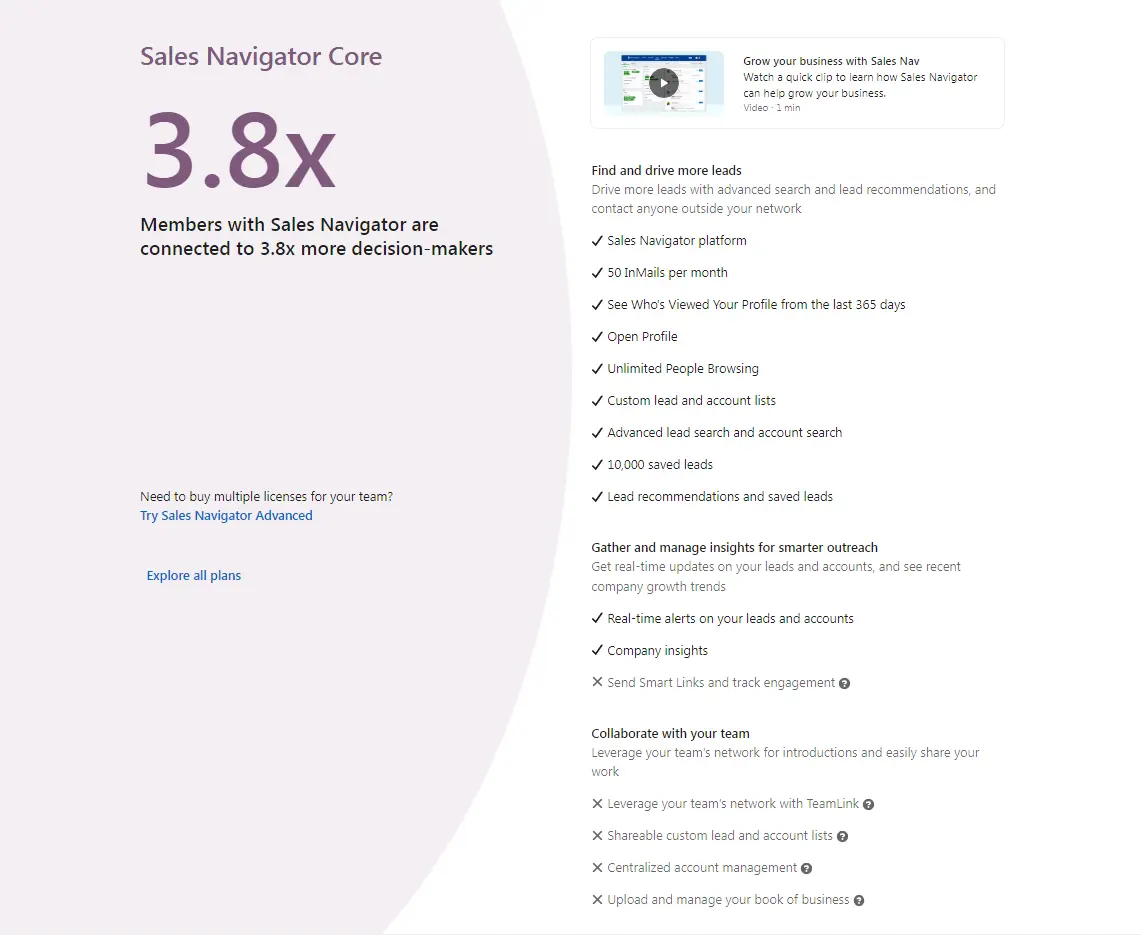
As mentioned earlier, LinkedIn Sales Navigator is your secret weapon to execute ABM. This tool gives you access to LinkedIn’s extensive database tailored explicitly for ABM.
Here’s how you’ll use it:
- Search for Accounts: Identify the companies you want to target.
- Build Account Lists: Organize and prioritize your target accounts.
- Find Decision Makers: Locate the key players within these companies.
- Create Targeted LinkedIn Ads: Craft ads that resonate with your audience on LinkedIn.
3. Define Your Ideal Customer Profile (ICP)
Before you dive into the LinkedIn database, take a strategic pause. Imagine the perfect clients for your product or service.
To do this effectively:
- Look at Existing Clients: They’re a goldmine of insights for scaling. What industries do they belong to? How big are they? These details shape the foundation of your ICP, serving as the heroes in your story.
- Consider Static Signals: Now, add some structure. Static signals offer a snapshot of a company’s status. Explore factors like industry, size, geography, and specific department sizes (like IT or Sales). These static signals anchor your ICP in the practicalities of the business world.
- Explore Dynamic Signals: But we’re not crafting a still image; we’re capturing the dynamic essence of potential clients. Dynamic signals, like fundraising or launching new products, infuse life into your ICP. They hint at opportunities, indicating which companies are ready for engagement.
This mix provides a variety of accounts with different levels of importance. Some are the stars of your story, while others play valuable supporting roles.
For this reason, you should prioritize your Ideal Customer Profile, recognizing which accounts are the main characters driving your success and which are the essential contributors to your growth.
Next, use the ICP to tailor your approach to each account, ensuring your engagement strategy resonates with their unique needs. This personalization transforms your efforts from generic outreach to targeted, meaningful conversations.
Read also: How to Get Clients on LinkedIn
4. Prioritize Accounts With The ABM Tiers System
More on categorizing your accounts using tiers! This isn’t just about identifying leads; it’s about understanding their significance for your company and tailoring your strategy accordingly.
Tiers I: Must Have – The Core Accounts
- Approach: These represent the pivotal accounts essential for your business’s success. Typically, they are prominent enterprises and top brands. Your key sales professionals and executives will lead the way with a hands-on, personal approach. They dive deep into these crucial accounts, ensuring a direct and tailored connection.
- Importance: Think of these accounts as the linchpins in your success story. They are not just vital; they are the foundation of your achievements. Securing them isn’t merely a win; it’s a substantial step toward your business goals.
Tiers II: Should Have – The Core Ensemble
- Approach: Imagine a well-coordinated team where your SDRs take the lead, performing personalized approaches like a smoothly rehearsed group. It’s all about engaging with these crucial clients seamlessly.
- Importance: These clients make up the heart of your revenue. While not the showstoppers, they play essential roles in moving your company’s story forward. Easier to close, they contribute consistently to your business’s steady progress.
Tiers III: Nice To Have – The Melodic Additions
- Approach: Envision a friendly, straightforward approach, like a catchy tune that spreads far and wide. It’s about reaching out efficiently to those easily accessible opportunities.
- Importance: Think of these accounts as the simple, sweet notes adding to your melody. They might not steal the spotlight, but they bring in extra revenue, contributing to the overall richness of your business.
Each tier in your ABM strategy has its own role.
Tiers I is about precise manual efforts, Tiers II focuses on well-organized approaches, and Tiers III is all about efficient and rhythmic actions.
Together, they make your success story. This tiered approach makes sure your efforts are well-adjusted, connecting with each type of account and creating a successful outcome.
5. Build Your Accounts Lists with LinkedIn Sales Navigator
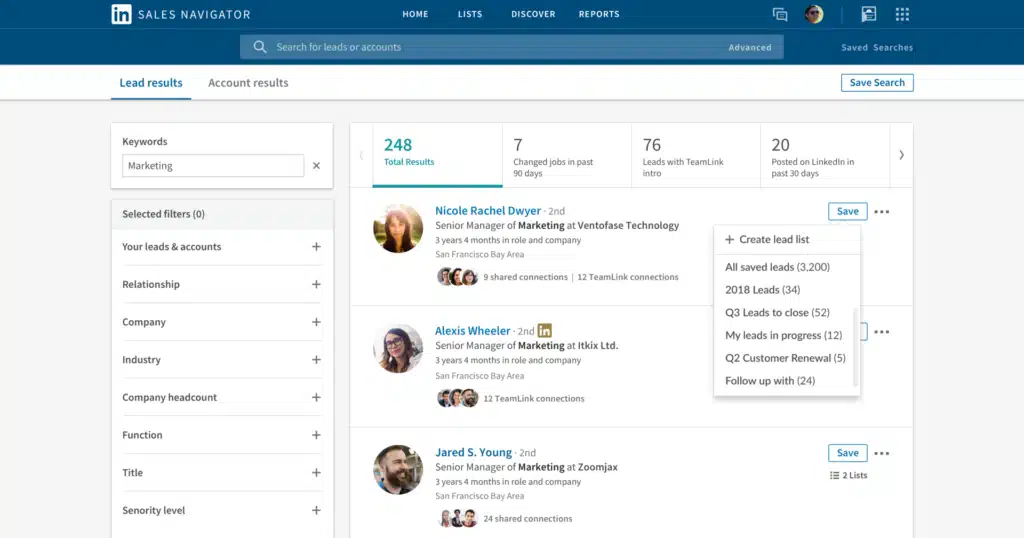
Now that you’ve defined your tiers, it’s time to put it into action on LinkedIn Sales Navigator.
Here’s how to go about it:
Account Search
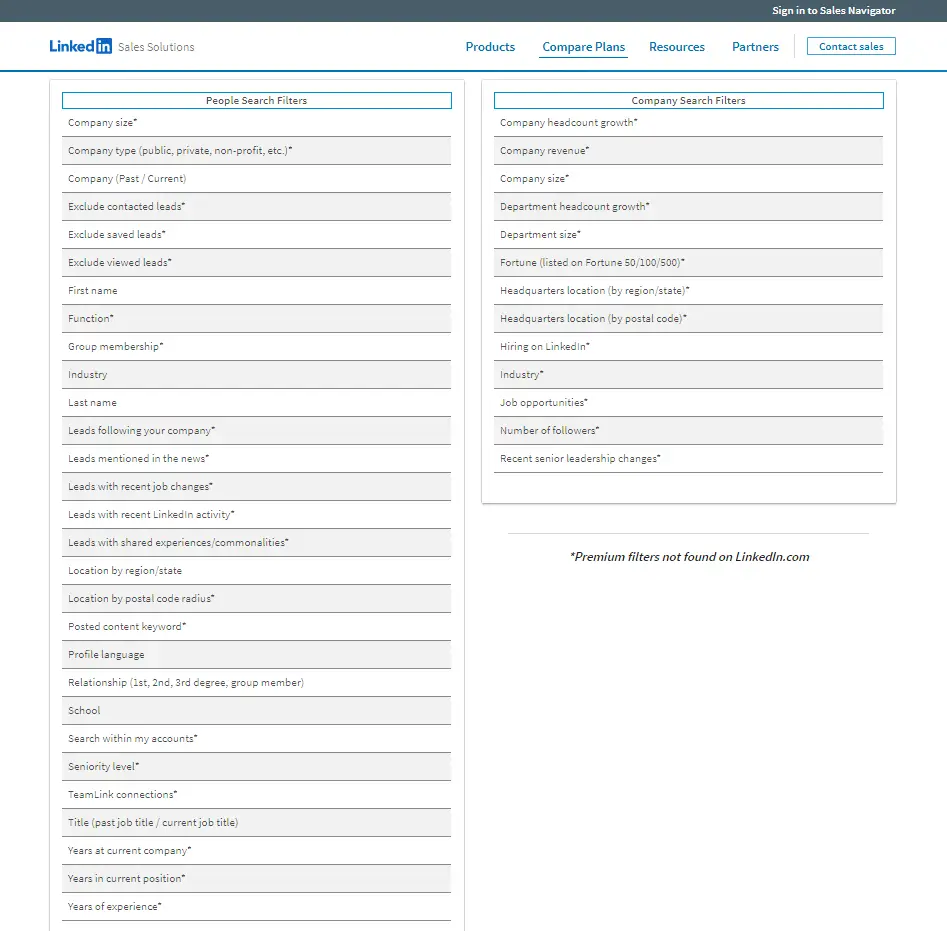
Navigate to the Account Search feature on LinkedIn Sales Navigator. Here, you have powerful filters at your disposal, including headcount, geography, and industry. Think of it as refining your search to find precisely what you’re looking for.
Add to Account List
Once you’ve fine-tuned your search and identified the accounts aligning with your tiers, the next step is crucial. Add these selected accounts to an Account List. Think of this list as your curated collection, carefully crafted to match your business goals.
Repeat for Tiers 2 and 3
This isn’t a one-time deal. For a comprehensive approach, repeat this process for Tiers 2 and 3.
Each tier might have different criteria and characteristics, so tailor your searches accordingly. This ensures that all tiers are well-represented in your LinkedIn Sales Navigator strategy.
6. Find Decision Makers with The Lead Search
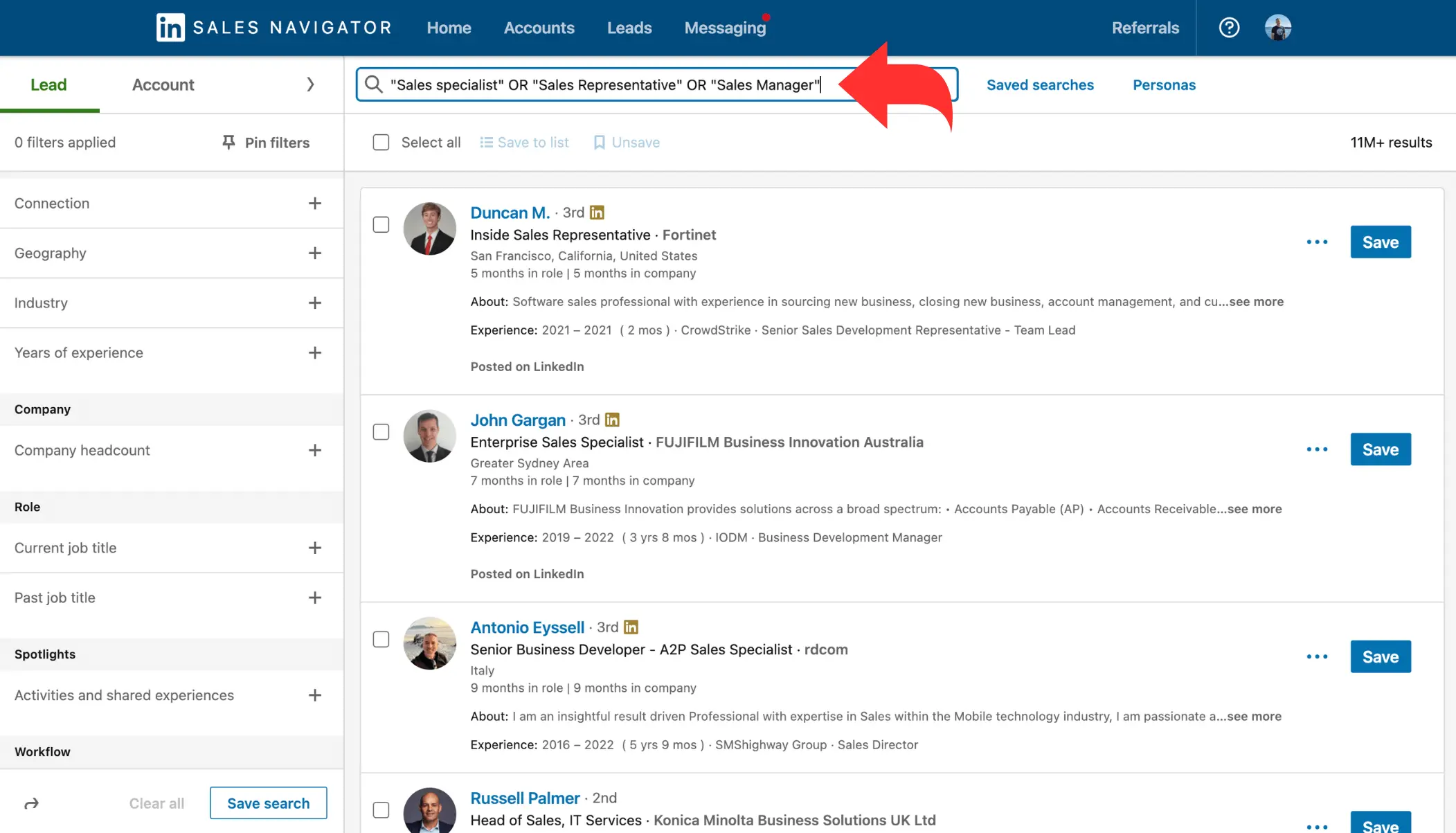
With your account lists in place, it’s time to zero in on the decision-makers within these chosen companies. The process involves a strategic Lead Search, identifying the key players who can shape your business narrative.
Navigate to the Lead Search, open the Account List filter, and select your desired list. Use the job title filter to pinpoint the key players within these companies.
Use LinkedIn Sales Navigator’s boolean search to refine your results further.
Repeat this process for Tiers 2 and Tiers 3, adjusting your search criteria to match the nuances of each tier.
7. Export LinkedIn Search into a CSV and Find Emails
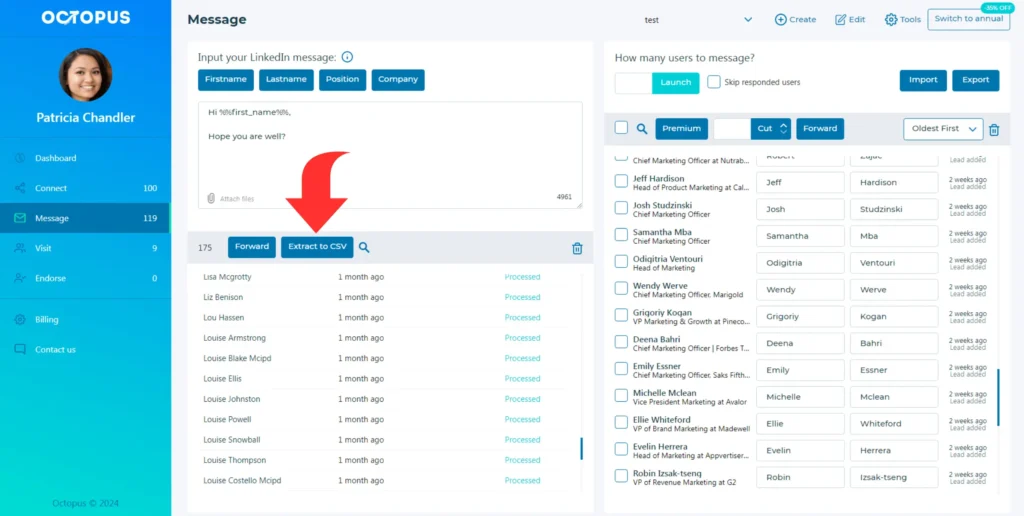
Once you’ve identified decision-makers, it’s time to organize and prepare for outreach.
Here’s how:
- Save Them: Save them into a lead list for future reference.
- Export to CSV With Your CRM: This tool will clean and filter data. Plus, the best CRM tools for sales can even ensure a pristine list with verified emails.
8. Automate LinkedIn ABM Targeting with Saved Searches
Don’t let new opportunities slip through the cracks. Use Saved Searches to stay updated on new companies matching your filters.
Here’s how:
- Save Your Account Searches: When you’ve crafted your Account Searches, don’t let that effort go to waste. Instead, save them for future reference. Think of it as bookmarking your strategy, ready to be revisited whenever needed.
- Set Up Weekly Updates: LinkedIn simplifies your workflow by sending you weekly updates on new companies matching your filters. These updates ensure that you’re always in the loop, ready to explore fresh possibilities.
- A Proactive ABM Lead Generation: When you incorporate Saved Searches and Weekly Updates, you’re actually putting your ABM lead generation on autopilot. This proactive approach means that new, qualified opportunities come to you effortlessly.
9. Add New Decision Makers to Your Campaigns
Keep the momentum going. Regularly create new account lists and find new decision-makers. This ensures a steady flow of opportunities into your Sales pipeline.
10. Execute Your Outreach
To get things rolling, start reaching out to people lower in the hierarchy. Here’s a simple guide:
Spotting the Top Executives:
- Connect with those lower down the ladder to gather insights.
- Use these chats to figure out who the key top executives are.
Precision in Meeting Setup:
- Once you know the key players, reach out to them and suggest meetings.
- These meetings become opportunities to dive deeper into your business objectives.
While sketching your account map, also engage with folks in Tiers II and Tiers III. Ask them about the decision-makers crucial for introducing your product or service. This clever move lets you tailor your approach with relevant details from the employee who guided you.
Conclusion
Congratulations! You’ve mastered the art of LinkedIn ABM targeting. As you can see, to succeed on LinkedIn with Account-Based Marketing, it’s not just about steps; it’s a dynamic strategy adapting to your business landscape. Make sure to keep refining your strategy to craft not just a success story but a symphony of growth.
